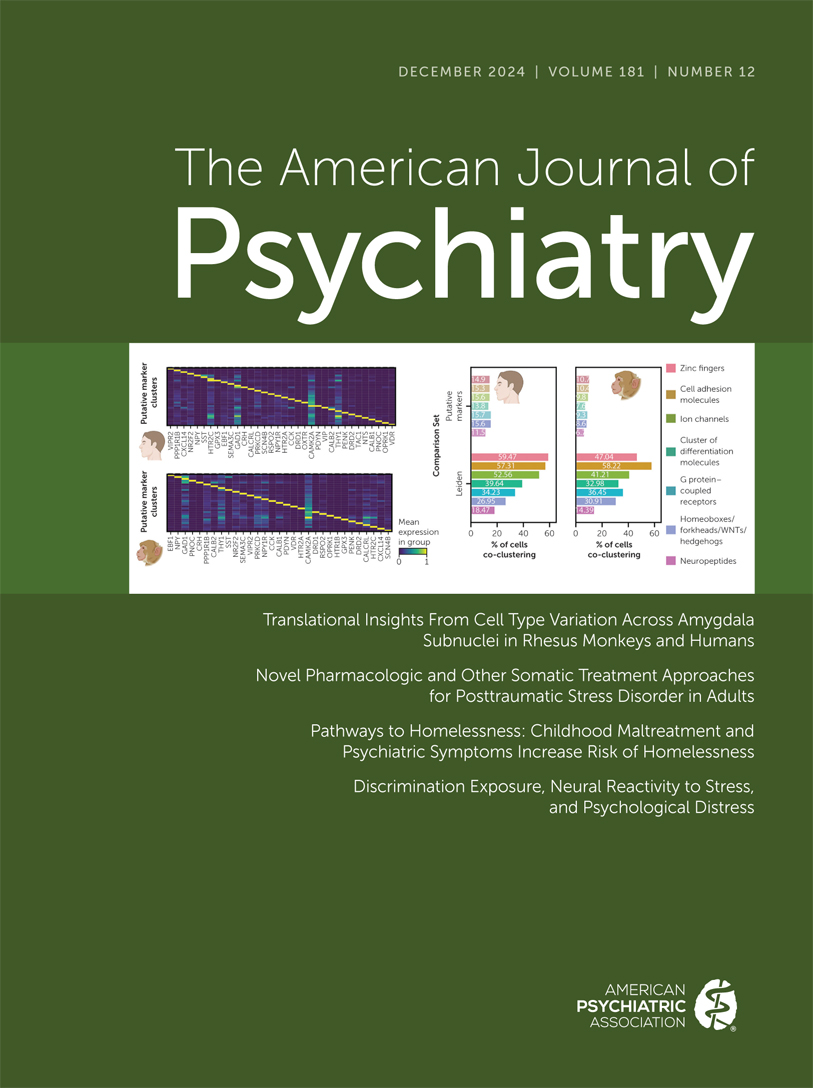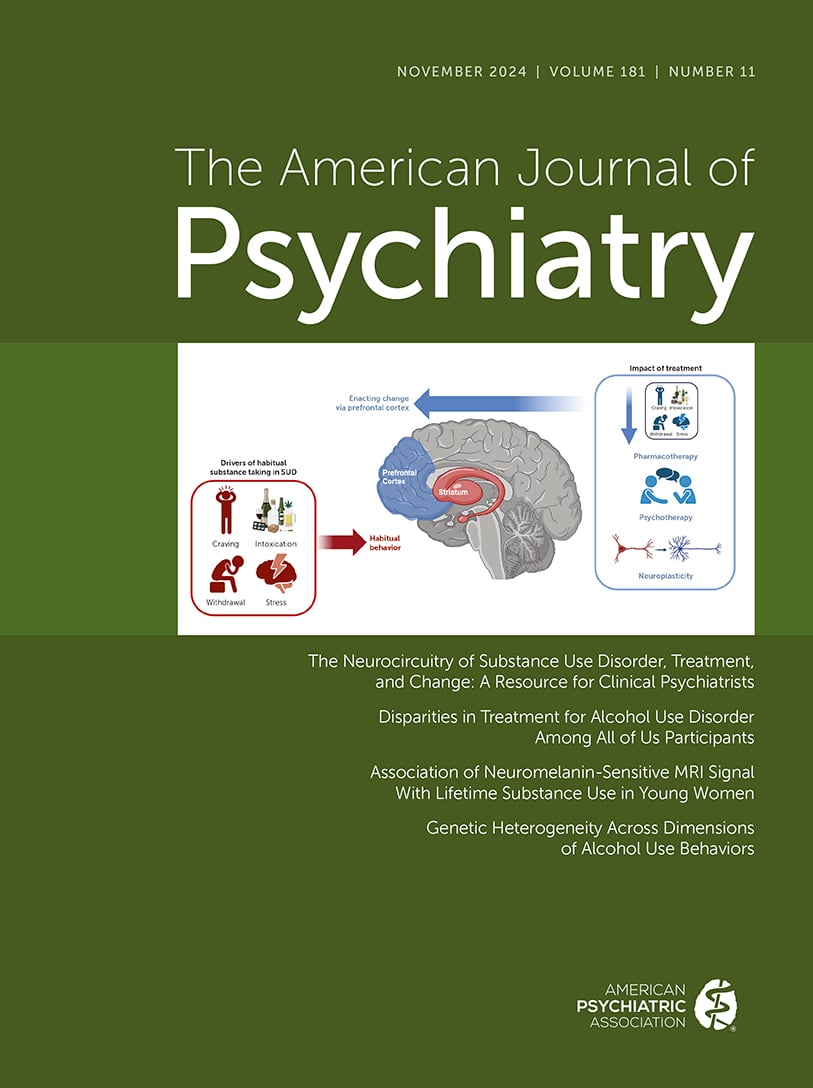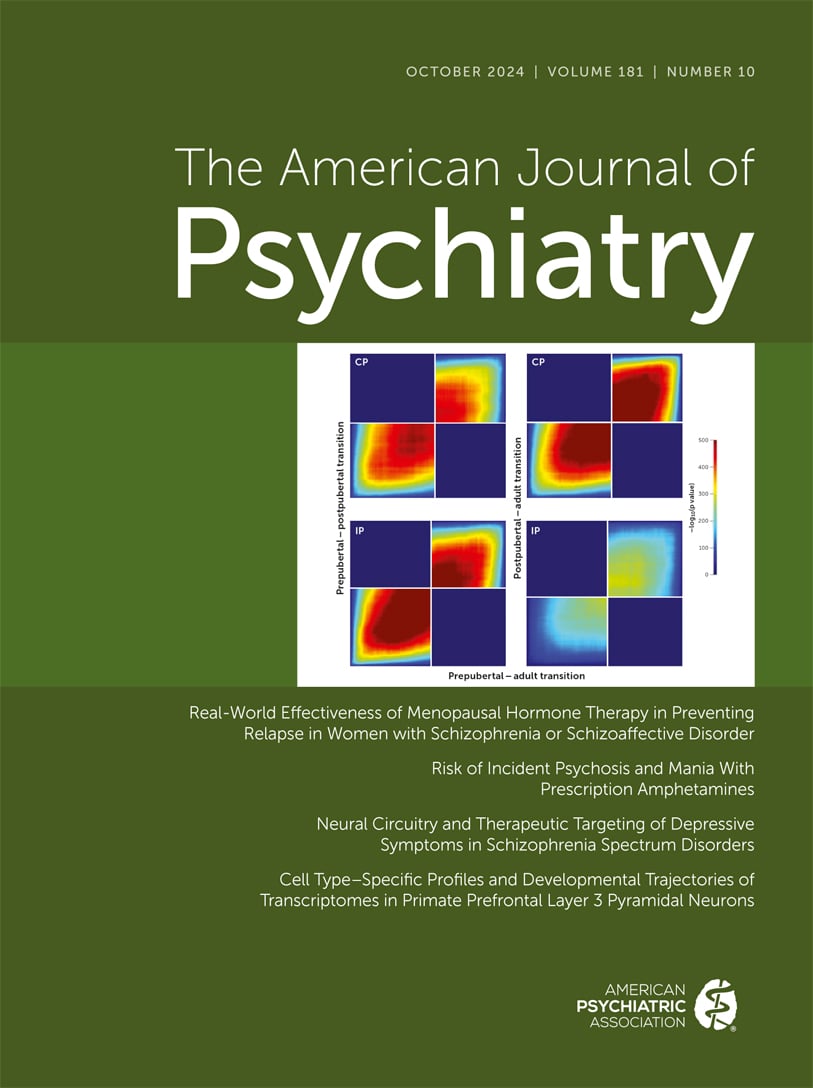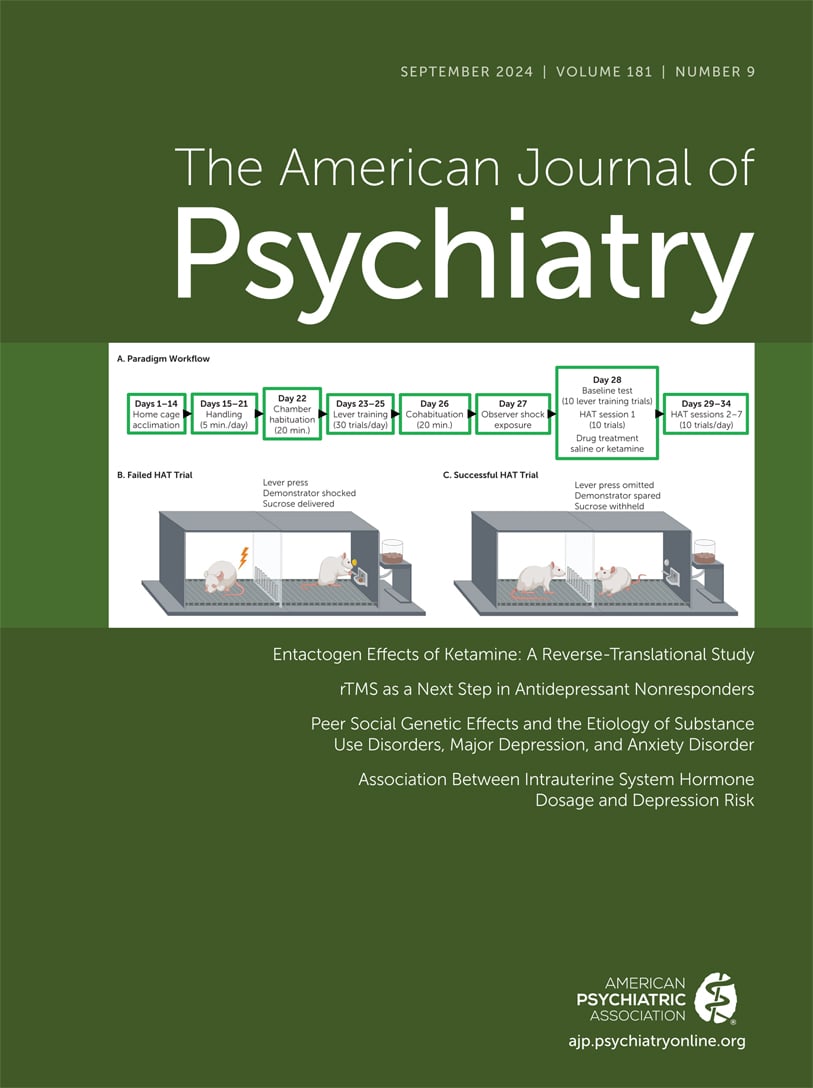American Journal of Psychiatry
- Volume 166
- Number 9
- September 2009
In This Issue
Editorial
Commentary
Treatment in Psychiatry
Publication date: 01 September 2009
Pages974–979Although empirical evidence has recently validated clinical depression in children as young as age 3, few data are available to guide treatment of early childhood depression. Considering this gap in the literature, a novel dyadic psychotherapeutic model, ...
https://doi.org/10.1176/appi.ajp.2009.08111709Reviews and Overviews
Publication date: 01 September 2009
Pages980–991Objective: The authors sought to determine by meta-analysis the efficacy and tolerability of adjunctive atypical antipsychotic agents in major depressive disorder. Method: Searches were conducted of MEDLINE/PubMed (1966 to ...
https://doi.org/10.1176/appi.ajp.2009.09030312Article
Publication date: 01 September 2009
Pages992–1001Objective: The authors sought to determine whether a significant association exists between the use of stimulants and the rare event of sudden unexplained death in children and adolescents. Method: A matched case-control ...
https://doi.org/10.1176/appi.ajp.2009.09040472Publication date: 01 September 2009
Pages1002–1010Objective: Quality improvement programs for depressed youths in primary care settings have been shown to improve 6-month clinical outcomes, but longer-term outcomes are unknown. The authors examined 6-, 12-, and 18-month outcomes of a primary ...
https://doi.org/10.1176/appi.ajp.2009.08121909Publication date: 01 September 2009
Pages1011–1024Objective: Major depressive disorder is a heterogeneous illness with a mostly uncharacterized pathology. Recent gene array attempts to identify the molecular underpinnings of the illness in human postmortem subjects have not yielded a ...
https://doi.org/10.1176/appi.ajp.2009.08121760Publication date: 01 September 2009
Pages1025–1030Objective: The authors sought to determine whether prenatal exposure to infection and a positive family history of psychotic disorders interact synergistically to increase the risk of later developing schizophrenia. Method: ...
https://doi.org/10.1176/appi.ajp.2009.08010031Publication date: 01 September 2009
Pages1031–1040Objective: Genetic variation influences differential vulnerability to addiction within populations. However, it remains unclear whether differences in frequencies of vulnerability alleles contribute to disparities between populations and to ...
https://doi.org/10.1176/appi.ajp.2009.08071068Publication date: 01 September 2009
Pages1041–1047Objective: The authors examined whether motor coordination difficulties assessed in childhood predict later adult schizophrenia spectrum outcomes. Method: A standardized childhood neurological examination was administered to ...
https://doi.org/10.1176/appi.ajp.2009.08091400Publication date: 01 September 2009
Pages1048–1054Objective: Irritability is a widely occurring DSM-IV symptom in youths. However, little is known about the relationship between irritability in early life and its outcomes in mid-adulthood. This study examines the extent to which youth ...
https://doi.org/10.1176/appi.ajp.2009.08121849Publication date: 01 September 2009
Pages1055–1062Objective: Schizophrenia is treated with medications that raise serum anticholinergic activity and are known to adversely affect cognition. The authors examined the relationship between serum anticholinergic activity and baseline cognitive ...
https://doi.org/10.1176/appi.ajp.2009.09010017Letters to the Editor
Book Forum
APA Official Actions
Book Forum
Books Received
Past Issues
View Issues Archive
Vol. 181 | No. 12

Vol. 181 | No. 11

Vol. 181 | No. 10
